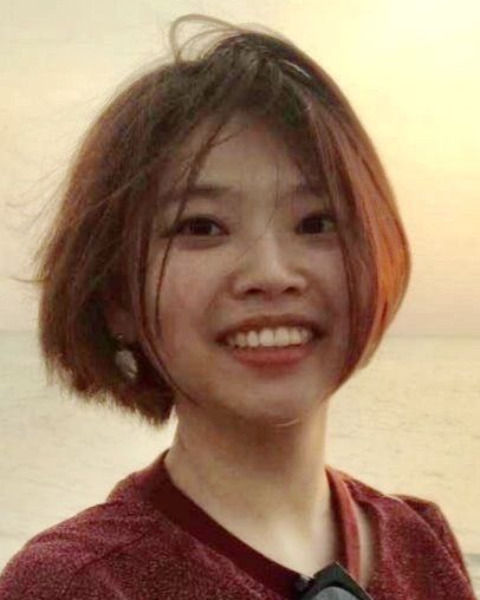Back
Background: Hypoxic ischemic encephalopathy (HIE) is a brain injury affecting 1~5/1000 term-born neonates. Therapeutic hypothermia reduces mortality/morbidity, yet ~60% of patients still die or develop neurocognitive deficits by 2 years of age. To improve outcome and clinical care of HIE, accurately identifying and segmenting lesion regions in neonatal brain MRI is a crucial step. HIE injuries in neonatal brain MRI are often diffuse (i.e., multi-focal), and small (over half the patients in our data having lesions occupying < 1% of the whole brain volume). Dice overlap between algorithm- and expert-detected lesions is only ~0.5 for HIE. In contrast, algorithms achieved 0.8-0.9 Dice segmenting brain tumors in brain MRI.
Objective: To develop a deep learning method to detect HIE lesions.
Design/Methods: Apparent diffusion coefficient (ADC) maps, a diffusion MRI parameter map, from 133 patients treated in MGH (2001-18) were retrospectively used. We developed an AI algorithm termed as ParadiseNet. It consists of 3 modules, mimicking main steps in clinical lesion identification: (1) global-local learning, mimicking radiologists’ examination of whole-brain and regional MRI information; (2) progressive uncertainty learning, mimicking the process of expert consensus; and (3) self-evolution learning, mimicking radiologists’ adaption of prior knowledge into a specific patient. Accuracy was evaluated by Dice, sensitivity and specificity compared to expert consensus in cross validations. We also quantified the contribution of each of the 3 algorithm modules.
Results: Ablation study showed that combined 3 modules outperformed only 1 or 2 modules in ParadiseNet. Overall, ParadiseNet achieved 0.61 DICE, a significant ( >5%) improvement over state-of-the-art methods (DeepMedic and UNet). Error reduction was more remarkable in thalamus, basal ganglia, and other brain regions with key prognostic values for HIE.
Conclusion(s): Our novel ParadiseNet algorithm compared favorably against state-of-the-art algorithms on HIE lesion segmentation. Further work includes further validation in data from different sites, scanners, and imaging protocols, as well as the evaluation of the value of improved lesion detection toward HIE outcome prediction.
Neonatal General
Neonatal General 6: Neurology
715 - ParadiseNet: A Deep Learning Algorithm for Hypoxic Ischemic Encephalopathy Lesion Segmentation
Saturday, April 29, 2023
3:30 PM – 6:00 PM ET
Poster Number: 715
Publication Number: 715.234
Publication Number: 715.234
Rina Bao, Boston Children's Hospital, Cambridge, MA, United States; Yangming Ou, Boston Children's Hospital; Harvard Medical School, Boston, MA, United States; Anna N. Foster, Boston Children's Hospital, Boston, MA, United States; Patricia Ellen Grant, Boston Children's Hospital, Boston, MA, United States; Yanan Song, Boston Children's Hospital, Boston, MA, United States; Rebecca J. Weiss, Boston Children's Hospital, Boston, MA, United States; Rutvi Vyas, Boston Children's Hospital, Boston, MA, United States; Sara V. Bates, Massachusetts General Hospital, Boston, MA, United States; Sarah U. Morton, Boston Children's Hospital, Boston, MA, United States; Randy L. Gollub, Athinoula A. Martinos Center for Biomedical Imaging, Massachusetts General Hospital, Charlestown, MA, United States

Rina Bao (she/her/hers)
Postdoctoral Research Fellow
Boston Children's Hospital, Harvard Medical School
Cambridge, Massachusetts, United States
Presenting Author(s)
Background: Hypoxic ischemic encephalopathy (HIE) is a brain injury affecting 1~5/1000 term-born neonates. Therapeutic hypothermia reduces mortality/morbidity, yet ~60% of patients still die or develop neurocognitive deficits by 2 years of age. To improve outcome and clinical care of HIE, accurately identifying and segmenting lesion regions in neonatal brain MRI is a crucial step. HIE injuries in neonatal brain MRI are often diffuse (i.e., multi-focal), and small (over half the patients in our data having lesions occupying < 1% of the whole brain volume). Dice overlap between algorithm- and expert-detected lesions is only ~0.5 for HIE. In contrast, algorithms achieved 0.8-0.9 Dice segmenting brain tumors in brain MRI.
Objective: To develop a deep learning method to detect HIE lesions.
Design/Methods: Apparent diffusion coefficient (ADC) maps, a diffusion MRI parameter map, from 133 patients treated in MGH (2001-18) were retrospectively used. We developed an AI algorithm termed as ParadiseNet. It consists of 3 modules, mimicking main steps in clinical lesion identification: (1) global-local learning, mimicking radiologists’ examination of whole-brain and regional MRI information; (2) progressive uncertainty learning, mimicking the process of expert consensus; and (3) self-evolution learning, mimicking radiologists’ adaption of prior knowledge into a specific patient. Accuracy was evaluated by Dice, sensitivity and specificity compared to expert consensus in cross validations. We also quantified the contribution of each of the 3 algorithm modules.
Results: Ablation study showed that combined 3 modules outperformed only 1 or 2 modules in ParadiseNet. Overall, ParadiseNet achieved 0.61 DICE, a significant ( >5%) improvement over state-of-the-art methods (DeepMedic and UNet). Error reduction was more remarkable in thalamus, basal ganglia, and other brain regions with key prognostic values for HIE.
Conclusion(s): Our novel ParadiseNet algorithm compared favorably against state-of-the-art algorithms on HIE lesion segmentation. Further work includes further validation in data from different sites, scanners, and imaging protocols, as well as the evaluation of the value of improved lesion detection toward HIE outcome prediction.
